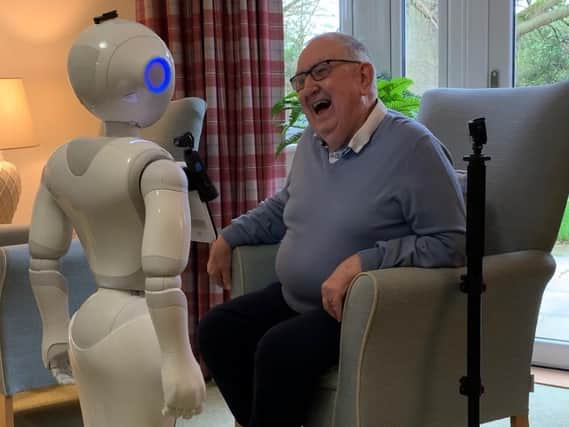Robots found to ease loneliness in older people in care homes


The largest ever study investigating the use of culturally competent robots in caring for the elderly has shown they can have a “significant improvement” in older adults living in care homes.
The CARESSES study was “one of the most rigorous, complex and largest of its kind”, and led by the University of Genova in Italy, which developed the robot’s Artificial Intelligence, and involved researchers at the University of Bedfordshire, Middlesex University and Advinia Health Care, as well as teams around the world.
Advertisement
Hide AdAdvertisement
Hide AdThey found that older adults in care homes who used the culturally competent robot for up to 18 hours across two weeks saw a significant improvement in their mental health.
After two weeks of using the system there was a small but positive impact on loneliness severity among users, and the system had a significant positive impact on participants’ attitudes towards robots.
Lead author of the evaluation, Dr Chris Papadopoulos from the University of Bedfordshire said: “This study is ground-breaking because it is the largest ever investigation into the use of autonomous social robots for older adults in care settings.
“The results show that using the CARESSES artificial intelligence in robots such as Pepper has real potential benefit to a world that is witnessing more people living longer with fewer people to look after them.
“Poor mental health and loneliness are significant health concerns and we have demonstrated that robots can help alleviate these.”
Comment Guidelines
National World encourages reader discussion on our stories. User feedback, insights and back-and-forth exchanges add a rich layer of context to reporting. Please review our Community Guidelines before commenting.